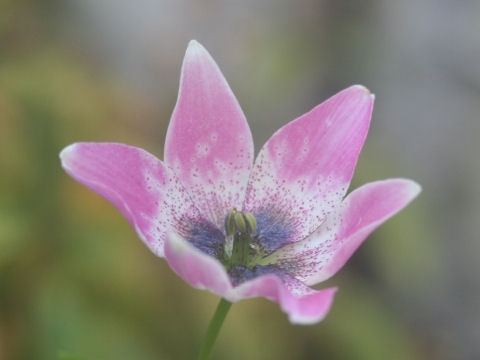
|
|
|
   |
|
|
|
ビルマから中国にかけて広く分布しています。葉は披針形で、2個づつ茎につきます。花は6弁で平開し、お皿のかたちです。花弁は淡いローズピンクからシェルピンクで、基部を中心に紫色の斑があります。また蜜腺があるところは暗赤色の斑点となっています。種名は、最初に発見されたサルウィン川のほとりに因みます。中国語では「雲南豹子花(yun nan bao zi hua)」と呼ばれます。 |
|
|
ユリ科ノモカリス属の多年草で、学名は Nomocharis saluenensis。英名はありません。 |
|
|
The Nomocharis saluenensis belongs to Liliaceae (the Lily family). It is a perennial herb that is widely distributed from Burma to China. The leaves are lanceolate and attached to the stem in twos. The flowers are 6-petaled, flat-opened, and dish-shaped. The petals are pale rose pink to shell pink with purple spots around the base. The nectary has dark red spots. The species name is derived from the Salween River, where it was first discovered. In Chinese, it is called "雲南豹子花" (yun nan bao zi hua). |
|
|
[上・中] 大阪市鶴見区「咲くやこの花館」にて、2003年10月19日撮影。 [下] 同上にて、2005年12月07日撮影。 |

|
|
Shu Suehiro |